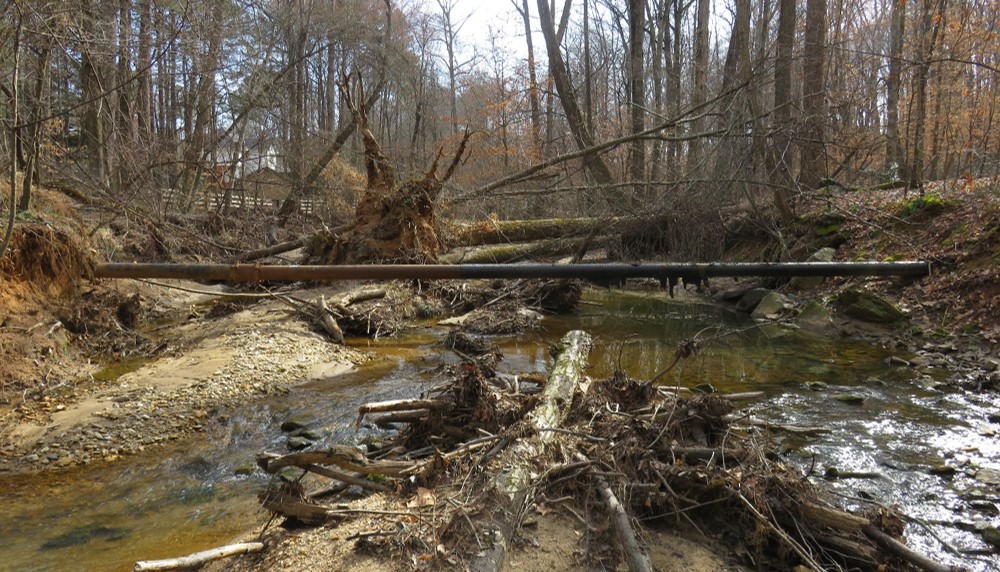Improving the quality of life for our clients and the communities they serve is one of the pillars of our company. As a water resources engineer, my primary goal is to improve my clients’ water quality as well as protect their existing infrastructure located along/near streams. We were given the opportunity to work with the city of Alpharetta, Georgia, to conduct a study along the Long Indian Creek. In order to help the city meet its total maximum daily load (TMDL) targets for fecal coliform along the creek, our team in Atlanta developed a watershed improvement plan (WIP) for approximately five miles of the creek and its tributaries. Based on the Environmental Protection Agency’s (EPA) definition, a TMDL is the calculation of the maximum amount of a pollutant allowed to enter a waterbody so that the waterbody will meet and continue to meet water quality standards for that particular pollutant.
Our scope for this project included data collection and processing, water quality sampling, water quantity and quality modeling, and recommendations of projects to reduce fecal loads in the watershed. As part of the water quality sampling, we conducted bacterial source tracking (BST), which can identify the source of fecal coliform (i.e., humans, horses, dogs, geese). Based on our knowledge of the watershed, we did not want to assume that humans were the source of fecal contamination, and we were in fact able to confirm that dogs were indeed the primary contributor. Based on this knowledge, we were able to tailor the rest of our approach to addressing fecal loading from dogs.
Water Quality Modeling
Part of this new approach involved water quality modeling of fecal runoff from dogs. In order to effectively model the quantity and quality of water in the system, we completed five miles of a stream walk along which riparian habitat and bank erosion indices were sampled at regular intervals to generate a bank erosion hazard index. Typical pool and riffle cross sections were also collected to document changes in the stream over time. Our team then built a hydrodynamic rainfall-runoff modeling using PCSWMM software. The model included stream sections and the city’s stormwater system within the watershed. The models were calibrated and run for 30-day periods based on actual rainfall data in order to properly simulate the TMDL. Fecal contamination was simulated using event mean concentrations (EMCs), which were applied to land-use types in the model.
In order to effectively model the quantity and quality of water in the system, we completed five miles of a stream walk along which riparian habitat and bank erosion indices were sampled at regular intervals to generate a bank erosion hazard index.”
Emma Bones
Impact Assessment
Once the model setup was complete, we assessed the impact of numerous projects on the fecal load of the watershed in order to recommend the most impactful and cost-effective solutions. Locations were identified and high-level conceptual designs were completed for five recommended stream restorations. These locations were primarily sited around existing exposed infrastructure to pose the dual benefit of restoring water quality along the stream and improving the resilience of the water and sanitary sewer infrastructure that has been exposed by stream migration/degradation.
.jpg?sfvrsn=380d1388_0) This is a scenario modeled when dog waste stations and community education are implemented in all areas of the watershed that are part of the City of Alpharetta and two ‘hotspot’ areas within Johns Creek.
This is a scenario modeled when dog waste stations and community education are implemented in all areas of the watershed that are part of the City of Alpharetta and two ‘hotspot’ areas within Johns Creek.
 Aerial crossing of a sanitary sewer line caused by stream degradation and expansion. The crossing is at risk of causing debris jams.
Aerial crossing of a sanitary sewer line caused by stream degradation and expansion. The crossing is at risk of causing debris jams.
We also sited bioswale green infrastructure at several locations throughout the watershed as a potential solution and provided conceptual designs. Ultimately, the city of Alpharetta selected the most cost-effective and direct method to address the fecal contamination by installing dog waste stations throughout the watershed and educating their citizens on the importance of cleaning up after their pets.